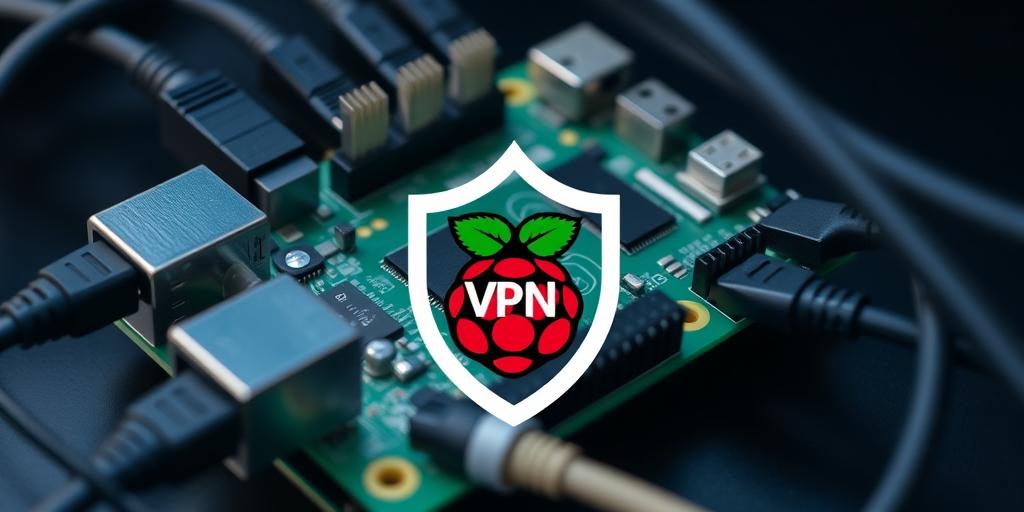DIY VPN Server: Step-by-Step Guide Using a Raspberry Pi
In today's digital landscape, online privacy and security are paramount. A Virtual Private Network (VPN) is a crucial tool for safeguarding your data and maintaining anonymity. While numerous commercial VPN services exist, setting up your own VPN server offers greater control and potentially lower costs. This guide provides a comprehensive, step-by-step walkthrough of how to create your own VPN server using a Raspberry Pi.
Why Use a Raspberry Pi for a VPN Server?
A Raspberry Pi is a small, low-cost computer that's perfect for various projects, including hosting a VPN server. Here's why it's a great choice:
- Cost-Effective: Raspberry Pi devices are relatively inexpensive.
- Low Power Consumption: They consume minimal energy, making them ideal for 24/7 operation.
- Customization: You have full control over the VPN server's configuration.
- Privacy: Your data isn't routed through a third-party commercial VPN provider.
Prerequisites
Before you begin, ensure you have the following:
- Raspberry Pi: A Raspberry Pi 3B+, 4, or later model is recommended.
- MicroSD Card: At least 16GB, with a recommended speed of Class 10 or higher.
- Ethernet Cable: For a stable network connection (recommended over Wi-Fi).
- Power Supply: A reliable power supply for your Raspberry Pi.
- Computer: To access and configure the Raspberry Pi.
- Internet Connection: A stable internet connection.
Step 1: Install Raspberry Pi OS
- Download Raspberry Pi Imager: Go to the official Raspberry Pi website and download the Raspberry Pi Imager for your operating system.
- Install Raspberry Pi OS:
- Insert the MicroSD card into your computer.
- Open Raspberry Pi Imager.
- Choose "Raspberry Pi OS (other)" and then select "Raspberry Pi OS Lite (64-bit)" for a minimal installation.
- Select your MicroSD card.
- Click "Write" to flash the OS onto the card.
- Enable SSH:
- After flashing, reinsert the MicroSD card into your computer.
- Navigate to the boot partition of the MicroSD card.
- Create an empty file named
ssh(without any extension).
Step 2: Configure the Raspberry Pi
- Boot the Raspberry Pi: Insert the MicroSD card into the Raspberry Pi, connect it to your network via Ethernet, and power it on.
- Find the IP Address:
- Log into your router's admin interface and look for the Raspberry Pi in the list of connected devices, or use a network scanning tool.
- Connect via SSH:
- Open a terminal or command prompt on your computer.
- Type
ssh pi@<your_raspberry_pi_ip_address>and press Enter. - The default password is
raspberry.
- Update the System:
- Once logged in, update the system packages:
sudo apt update sudo apt upgrade
- Once logged in, update the system packages:
- Change the Default Password:
- For security reasons, change the default password:
sudo passwd pi - Follow the prompts to enter a new password.
- For security reasons, change the default password:
- Set a Static IP Address (Optional but Recommended):
- Edit the
dhcpcd.conffile:sudo nano /etc/dhcpcd.conf - Add the following lines at the end of the file, replacing the example values with your network's configuration:
interface eth0 static ip_address=192.168.1.200/24 static routers=192.168.1.1 static domain_name_servers=1.1.1.1,8.8.8.8 - Save the file and reboot the Raspberry Pi:
sudo reboot
- Edit the
Step 3: Install and Configure OpenVPN
- Install OpenVPN and Easy-RSA:
sudo apt install openvpn easy-rsa - Prepare Easy-RSA:
make-cadir ~/openvpn-ca cd ~/openvpn-ca nano vars- Edit the
varsfile to set your certificate authority details. Modify the following lines to reflect your information:export KEY_COUNTRY="US" export KEY_PROVINCE="CA" export KEY_CITY="SanFrancisco" export KEY_ORG="MyOrganization" export KEY_EMAIL="me@example.com" export KEY_OU="MyOrganizationalUnit" - Save the file and close the editor.
- Edit the
- Build the Certificate Authority:
source vars ./clean-all ./build-ca - Generate the Server Certificate and Key:
./build-key-server server- When prompted, answer the questions appropriately. You can accept the default values for most prompts.
- Generate Diffie-Hellman Parameters:
./build-dh- This process may take some time.
- Generate Client Certificates:
./build-key client1- Repeat this step for each client that will connect to the VPN, changing
client1toclient2,client3, etc.
- Repeat this step for each client that will connect to the VPN, changing
- Copy the Necessary Files:
cd keys sudo cp ca.crt server.crt server.key dh2048.pem /etc/openvpn sudo cp client1.crt client1.key ca.crt /home/pi- Repeat for each client, adjusting the file names and destination directory accordingly.
- Configure the OpenVPN Server:
- Copy the sample OpenVPN configuration file:
sudo cp /usr/share/doc/openvpn/examples/sample-config-files/server.conf.gz /etc/openvpn/ sudo gzip -d /etc/openvpn/server.conf.gz sudo nano /etc/openvpn/server.conf - Edit the
server.conffile:- Uncomment and modify the `push
- Copy the sample OpenVPN configuration file:









